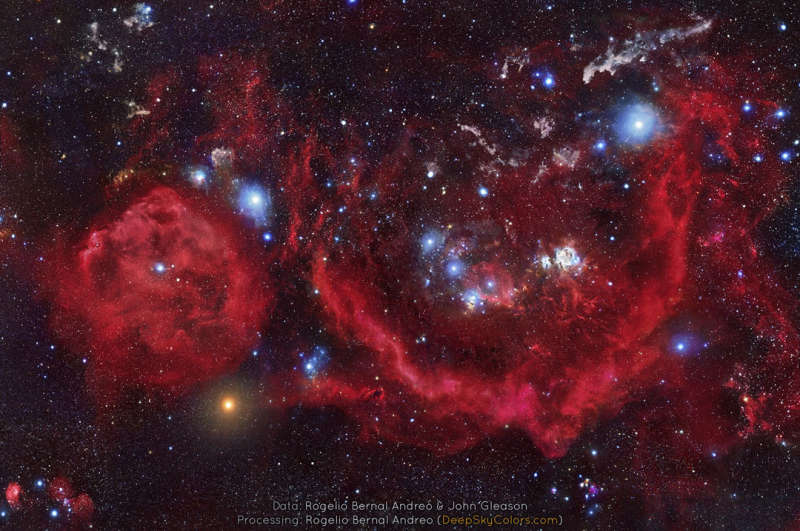Credit & Copyright: John Gleason
&
Rogelio
Bernal Andreo
Explanation:
Do you recognize this constellation?
Although it is one of the
most recognizable star groupings on the sky,
this is a
more full Orion than you can see --
an Orion only revealed with long exposure digital
camera imaging and
post-processing.
Here the cool
red giant
Betelgeuse
takes on a strong orange tint as the brightest star at the lower left.
Orion's hot blue stars are numerous, with
supergiant
Rigel balancing Betelgeuse on the upper right, and
Bellatrix
at the upper left.
Lined up in
Orion's belt are three stars
all about 1,500
light-years away, born from the constellation's well-studied
interstellar clouds.
To the right of Orion's belt is a bright but fuzzy patch that might also
look familiar -- the stellar nursery known as
Orion's Nebula.
Finally, just barely visible to the
unaided
eye but quite striking here is
Barnard's Loop -- a huge gaseous emission nebula surrounding Orion's Belt and
Nebula discovered over 100 years ago by the pioneering Orion photographer
E. E. Barnard.
APOD Podcasts: Available on
iTunes
and
YouTube.
1999 2000 2001 2002 2003 2004 2005 2006 2007 2008 2009 2010 2011 2012 2013 2014 2015 2016 2017 2018 2019 2020 2021 2022 2023 2024 2025 |
Yanvar' Fevral' Mart Aprel' Mai Iyun' Iyul' Avgust Sentyabr' Oktyabr' Noyabr' Dekabr' |
NASA Web Site Statements, Warnings, and Disclaimers
NASA Official: Jay Norris. Specific rights apply.
A service of: LHEA at NASA / GSFC
& Michigan Tech. U.
|
Publikacii s klyuchevymi slovami:
Orion - Orion
Publikacii so slovami: Orion - Orion | |
Sm. takzhe:
Vse publikacii na tu zhe temu >> | |
